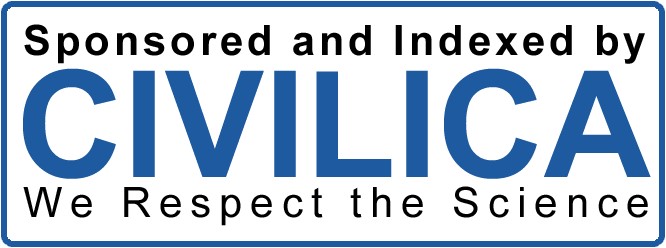ارائه مدل جو مشارکتجویانه درکلاس درس بر اساس متغیرهای ساختاری و رفتاری
کلمات کلیدی:
جو کلاس درس, جو مشارکتجویانه, متغیرهای ساختاری, متغیرهای رفتاریچکیده
هدف این پژوهش ارائه مدلی از جو مشارکتجویانه در کلاس درس با توجه به متغیرهای ساختاری و رفتاری است. پژوهش حاضر از نظر هدف، کاربردی و از لحاظ روش گردآوری دادهها توصیفی–پیمایشی و از نظر نوع دادهها کیفی است. جامعه آماری شامل کلیه مدیران مدارس، برنامهریزان آموزشی و اعضای هیئت علمی دانشگاهها در حوزههای برنامهریزی درسی، مدیریت آموزشی و علوم تربیتی بود. نمونهها با روش نمونهگیری هدفمند بر اساس اصل اشباع نظری انتخاب شدند. دادهها از طریق مصاحبههای نیمهساختاریافته گردآوری و با استفاده از روش کدگذاری نظری در سه مرحله باز، محوری و انتخابی تحلیل شدند. روایی با استفاده از بازبینی مشارکتکنندگان، مثلثسازی دادهها و ارزیابی همتایان و پایایی با محاسبه میزان توافق بین دو کدگذار مستقل (78 درصد) بررسی شد. نتایج تحلیل دادهها نشان داد متغیرهای ساختاری شامل پنج مؤلفه زیرساخت مدرسه، فناوری، برنامه درسی، ساختار سازمانی و مدیریت کلاس درس هستند. همچنین، متغیرهای رفتاری شامل هشت مؤلفه مشارکت دانشآموزان، انگیزه دانشآموزان، محیط یادگیری، یادگیری دانشآموزان، تعاملات، اشتیاق معلمان، اشتیاق دانشآموزان و مهارتهای ارتباطی دانشآموزان میباشند. یافتهها نشان داد که ترکیب مؤثر این دو بعد موجب شکلگیری محیط یادگیری تعاملی، انگیزشی و کارآمد میشود. نتایج این پژوهش نشان داد که جو مشارکتجویانه در کلاس درس نیازمند توجه همزمان به عوامل ساختاری و رفتاری است. بهبود زیرساختها و فناوریهای آموزشی از یکسو و تقویت انگیزه، اشتیاق و ارتباطات مؤثر میان معلم و دانشآموز از سوی دیگر، میتواند به افزایش مشارکت، کیفیت یادگیری و رضایت آموزشی منجر شود. این مدل میتواند به عنوان چارچوبی برای بهبود سیاستهای آموزشی و طراحی محیطهای یادگیری مشارکتی مورد استفاده قرار گیرد.
.
دانلودها
مراجع
Abidin, Z. (2024). Effective Classroom Management as a Quick Solution to Improve Student Participation and Motivation in the Learning Process. Zabags International Journal of Education, 2(2), 75-88. https://doi.org/10.61233/zijed.v2i2.22
Ahmad, C. V. (2021). Causes of students' reluctance to participate in classroom discussions. ASEAN Journal of Science and Engineering Education, 1(1), 47-62. https://doi.org/10.17509/ajsee.v1i1.32407
Alghamdi, M., & Khadawardi, H. A. (2024). Investigating the impact of teacher enthusiasm on engagement among Saudi First-Year EFL students. International Journal of English Language Education, 12(2), 10-5296. https://doi.org/10.5296/ijele.v12i2.22241
Ariyani, A., Wello, B., Basri, M., & Arham, M. (2024). Lecturers' Interpersonal Communication Skills and Their Influence on Student Engagement in EFL Speaking Classes. ELT Worldwide: Journal of English Language Teaching, 11(2), 512-527. https://doi.org/10.26858/eltww.v11i2.67062
Aziz, F., Quraishi, U., & Kazi, A. S. (2018). Factors behind Classroom Participation of Secondary School Students (A Gender Based Analysis). Universal Journal of Educational Research, 6(2), 211-217. https://doi.org/10.13189/ujer.2018.060201
Barr, J. J. (2016). Developing a Positive Classroom Climate. https://eric.ed.gov/?id=ED573643
Berliana, R. P., & Habiby, W. N. (2024). TEACHER PERCEPTIONS AND IMPLEMENTATION OF A DEMOCRATIC CLASSROOM ATMOSPHERE IN ELEMENTARY SCHOOLS. Jurnal Cakrawala Pendas, 10(2), 318-335. https://doi.org/10.31949/jcp.v10i2.8915
Cohen, L., Manion, L., & Morrison, K. (2017). Action research Research methods in education. https://doi.org/10.4324/9781315456539-22
Comber, B., & Hayes, D. (2023). Classroom participation: Teachers' work as listeners. Journal of Curriculum Studies, 55(1), 37-48. https://doi.org/10.1080/00220272.2022.2134738
Dewaele, J. M., & Li, C. (2021). Teacher enthusiasm and students' social-behavioral learning engagement: The mediating role of student enjoyment and boredom in Chinese EFL classes. Language Teaching Research, 25(6), 922-945. https://doi.org/10.1177/13621688211014538
Ghaidi, N. (2023). Analyzing Factors Affecting Student Participation in the Learning Process. 1st International Conference on Top Teachers and Leading Schools in the Third Millennium, https://civilica.com/doc/1937964
Gholami, A., Namdari, Y., Rahmani, S. Z., & Safdari, S. (2023). Methods of Classroom Management. International Conference on Psychology, Educational Sciences, and Lifestyle,
Gholami Ghahderijani, F. (2024). Classroom Management in a Participatory Style by Teachers and Its Impact on the Academic Progress of Elementary Students. 6th National Conference on Professional Research in Psychology and Counseling from the Teacher's Perspective, https://civilica.com/doc/2081680
Holly, C., Porter, S., Vitale, T. R., & Echevarria, M. (2024). Grading participation in the classroom: The assumptions, challenges, and alternatives. Teaching and Learning in Nursing, 19(1), 27-33. https://doi.org/10.1016/j.teln.2023.06.020
Kim, J. E., Park, H., Jang, M., & Nam, H. (2017). Exploring flipped classroom effects on second language learners' cognitive processing. Foreign Language Annals, 50(2), 260-284. https://doi.org/10.1111/flan.12260
Ku, Y. T., Yu, H. Y., Tsai, I. C., & Liao, C. H. (2017). Design and Implementation of a Classroom Atmosphere Management System. EDULEARN17 Proceedings, https://doi.org/10.21125/edulearn.2017.0854
Kurbakova, S., Kulikova, E., Savkina, O., & Kurbakov, A. V. (2021). Collaborative Atmosphere in e-Learning Environment: How to Create It under the COVID-19 Pandemic. SSRN. https://doi.org/10.2139/ssrn.3990340
Kurtović, D., & Bajramović, E. (2021). The Role and Importance of Classroom Atmosphere in High Schools. Journal of Business and Economics, 780-786.
Liebech-Lien, B., & Sjølie, E. (2021). Teachers' conceptions and uses of student collaboration in the classroom. Educational Research, 63(2), 212-228. https://doi.org/10.1080/00131881.2020.1839354
Pölzl‐Stefanec, E. (2021). Challenges and barriers to Austrian early childhood educators' participation in online professional development programmes. British Journal of Educational Technology, 52(6), 2192-2208. https://doi.org/10.1111/bjet.13124
Precourt, E., & Gainor, M. (2019). Factors affecting classroom participation and how participation leads to a better learning. Accounting Education, 28(1), 100-118. https://doi.org/10.1080/09639284.2018.1505530
Rahdari, F., & Bezarafshan, F. (2023). The Role of Technology in Classroom Management. https://sid.ir/paper/1086128/fa
Rands, M. L., & Gansemer-Topf, A. M. (2017). The Room Itself Is Active: How Classroom Design Impacts Student Engagement. Journal of Learning Spaces, 6(1), 26-33. https://files.eric.ed.gov/fulltext/EJ1152568.pdf
Sadeghi Bahmani, A., Balali Shahvari, S., Ghani Kovi, K., & Mohammadi, M. (2023). The Impact of Collaborative Planning on Improving Classroom Climate. 1st International Conference on Sociology, Social Sciences, and Education with a Future-Oriented Approach, https://civilica.com/doc/2159069
Severe, E., Stalnaker, J., Hubbard, A., Hafen, C. H., & Bailey, E. G. (2024). To participate or not to participate? A qualitative investigation of students' complex motivations for verbal classroom participation. PLoS One, 19(2), e0297771. https://doi.org/10.1371/journal.pone.0297771
Shah Moradi, M., & Mehrani, T. (2018). Examining the Impact of Teachers' Participatory Behavior on Motivation and Academic Progress of Elementary Students. Teacher Professional Development, 3(4), 63-74. https://tpdevelopment.cfu.ac.ir/article_864.html
Shirvani, S., Moradi, M., Ahmadi, S., & Zafari, D. (2023). Classroom Management in a Participatory Style by Teachers and Its Impact on the Academic Progress of Elementary Students. 15th International Conference on Management and Humanities Research in Iran, https://civilica.com/doc/2013702
Tao, Y., Meng, Y., Gao, Z., & Yang, X. (2022). Perceived teacher support, student engagement, and academic achievement: A meta-analysis. Educational Psychology, 42(4), 401-420. https://doi.org/10.1080/01443410.2022.2033168
Tseng, O. M. (2024). Inactive Classroom Atmosphere in China: Predicament and Constructivist Solutions. Journal of Education, Humanities and Social Sciences, 30, 52-55. https://doi.org/10.54097/dajhdh19
Wright, P. (2021). Transforming mathematics classroom practice through participatory action research. Journal of Mathematics Teacher Education, 24(2), 155-177. https://doi.org/10.1007/s10857-019-09452-1
Yang, L., & Lian, L. H. (2025). Perceive Social Support, Academic Self-Efficacy, and Learning Engagement Among High School Students in China. International Journal of Evaluation and Research in Education (Ijere), 14(1), 629. https://doi.org/10.11591/ijere.v14i1.31029
Yaylacı, Ş., & Beauvais, E. (2017). The role of social group membership on classroom participation. PS: Political Science & Politics, 50(2), 559-564. https://doi.org/10.1017/S104909651600319X
Zhang, J. (2025). Integrating Chatbot Technology Into English Language Learning to Enhance Student Engagement and Interactive Communication Skills. Journal of Computational Methods in Sciences and Engineering, 25(3), 2288-2299. https://doi.org/10.1177/14727978241312992
دانلود
چاپ شده
ارسال
بازنگری
پذیرش
شماره
نوع مقاله
مجوز
حق نشر 2025 حسن اشرفی (نویسنده); اصغر شریفی (نویسنده مسئول); ذوالفقار رشیدی (نویسنده)

این پروژه تحت مجوز بین المللی Creative Commons Attribution-NonCommercial 4.0 می باشد.





